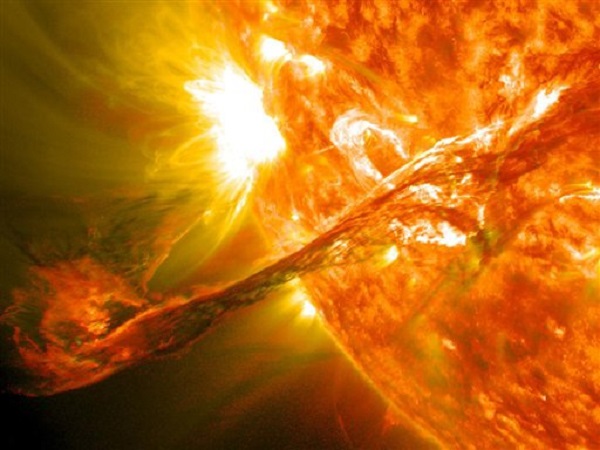
This image provided by NASA shows an image captured by NASA’s Solar Dynamics Observatory of a blast of plasma streaming from the sun in this August 2012 file photo. Scientists say a solar eruption was detected on March 5, 2013 and was headed toward Mars. NASA’s Curiosity rover will postpone some activities but other Mars missions will operate normally. AP
WASHINGTON, United States — A severe solar storm slammed Earth on Monday afternoon, increasing the chances of fluctuations in the power grid and GPS. It also pushes shimmering polar auroras to places where more people can possibly see them.
The National Oceanic and Atmospheric Administration said a potent blast of magnetic plasma shot out of the sun on Sunday, travelling faster than usual, hitting Earth with the biggest solar storm since March, maybe since September 2005.
NOAA space weather physicist Doug Biesecker said there are no reports of damage, but the electrical grid and GPS probably had current fluctuations that they could handle.
He said the storm could last a day or longer.
RELATED STORIES
Major solar storm hits Earth; GPS, power disturbance feared
Scientists: ‘Extreme’ solar storm heading to Earth